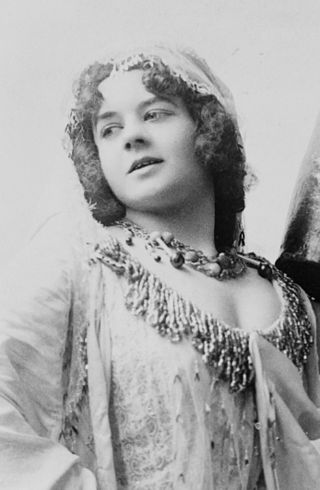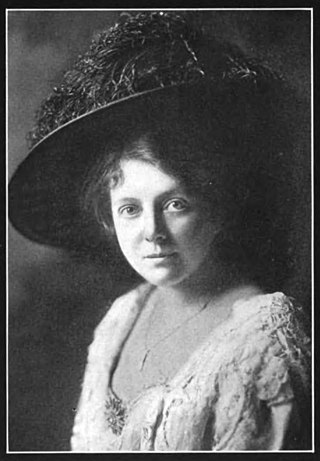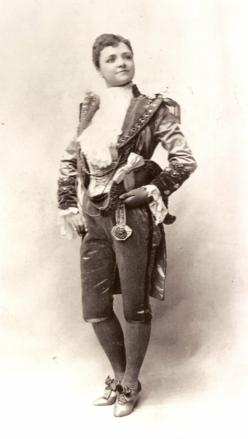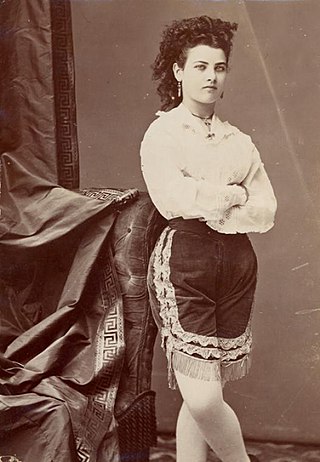
Annie Oakley was an American sharpshooter and folk heroine who starred in Buffalo Bill's Wild West.

Eva Tanguay was a Canadian singer and entertainer who billed herself as "the girl who made vaudeville famous". She was known as "The Queen of Vaudeville" during the height of her popularity from the early 1900s until the early 1920s. Tanguay also appeared in films, and was the first performer to achieve national mass-media celebrity, with publicists and newspapers covering her tours from coast-to-coast, out-earning the likes of contemporaries Enrico Caruso and Harry Houdini at one time, and being described by Edward Bernays, "the father of public relations", as "our first symbol of emergence from the Victorian age."

Tempest Storm, also dubbed "The Queen Of Exotic Dancers," was an American burlesque star and motion picture actress. Along with Lili St. Cyr, Sally Rand, and Blaze Starr, she was one of the best-known burlesque performers of the 1950s, 1960s, and 1970s. Her career as an exotic dancer spanned more than 60 years, and she was still performing in the early 21st century.

Annie Ellen Russell was a British-American stage actress.

Winifred Emms, best known by her stage name Hetty King, was an English entertainer who performed in the music halls as a male impersonator over some 70 years.

Blanche Ring was an American singer and actress in Broadway theatre productions, musicals, and Hollywood motion pictures. She was best known for her rendition of "In the Good Old Summer Time."

Kathleen Clifford was an American vaudeville and Broadway stage and film actress of the early twentieth century. She was known for her skills as a male impersonator.

Ella Shields was a music hall singer and male-impersonator. Her famous signature song, "Burlington Bertie from Bow", a parody of Vesta Tilley's "Burlington Bertie", written by her third husband, William Hargreaves, was an immediate hit. Though American-born, Shields achieved her greatest success in England.

Blanche Lillian Deyo was an American dancer, actress, and singer who performed in multiple theatrical venues -- Broadway, vaudeville, burlesque, ballet, and international variety theaters—throughout the late nineteenth and early twentieth centuries.

Annie Lewis was an American soubrette of light operas and musical comedies who died from tuberculosis in her twenties.

Ella Wesner was a celebrated male impersonator of the Gilded Age vaudeville circuit.
Elida Mary Morris, later Elida Morris Cooper, was an American vaudeville singer, comedian and actress.

Bessie Bonehill was an English vaudeville singer, comic entertainer and male impersonator. She toured widely in the United States in the 1890s, becoming "one of the most famous and wealthy entertainers of her day".

Kitty O'Neil was one of the most celebrated American variety theatre dancers of the late 19th century. From around 1863 until 1892, she performed in New York City, Boston and elsewhere in the United States, and at her death was acclaimed by The New York Times as "the best female jig dancer in the world." O'Neil's name is remembered today chiefly because of "Kitty O'Neil's Champion," a "sand jig" named in her honor that was first published in 1882 and revived starting in the 1970s by fiddler Tommy Peoples and other Irish traditional musicians.

Anne Sutherland was an American stage and screen actress who began acting in the 1880s. She began as a juvenile playing in a HMS Pinafore production. She appeared on stage in the 1880s-1890s with many greats of the period such as Henry E. Dixey in Adonis (1883), Lydia Thompson in Oxygen (1886), Nat C. Goodwin in The Nominee (1891), Georgia Cayvan in The City of Pleasure (1896), Joseph Jefferson in Rip Van Winkle and Mrs. Leslie Carter in Zaza (1899). One of her outstanding later plays was Craig's Wife (1925) which costarred Chrystal Herne.

Clementine de Vere, also known by her stage name Ionia, was the most influential female magician in the first half of the 20th century. A British magician and illusionist, she was also known as Clementine Weedon and Princess Clementine Eristavi Tchitcherine. She was a British citizen, although she was born in Belgium and lived in France for a long period. She performed with the stage name "Ionia - the Enchantress" or the "Goddess of Mystery".
Gilbert Saroni, also written Gilbert Sarony, was a cross-dressing performer in vaudeville as well as early Edison Manufacturing, American Mutoscope, and Siegmund Lubin films. In his obituary in Variety he was described as one of the first impersonators of the "old maid" type and was said to be "considered one of the funniest men in the show business."

Marie Lloyd Jr. was a British entertainer, composer and actress notable for her performances impersonating her mother, the music hall performer Marie Lloyd.

Edyth Shipton Goodall, professionally known as Edyth Goodall, was a Scottish actress. She was born in Dundee, the daughter of A. E. E. Goodall and his wife Annie, née Shipton.

Florence Hines (1868–1924) was a Black American vaudeville entertainer who was best known for performing throughout the United States in the 1890s as a male impersonator with Sam T. Jack's Creole Burlesque show. In her heyday, she was described as 'the greatest living female song and dance artist" and 'the queen of all male impersonators". Her career was noteworthy for breaking existing minstrel stereotypes and portraying Black men in a more positive light, as well as for setting high standards for the Black female comedians and blues singers who followed her.


















